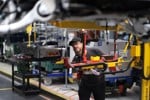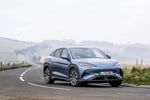Best practice fleet management techniques are being shared between two local authorities following a merger of council services that is designed to save millions of pounds.
The shared services strategy at St Edmundsbury Borough Council and Forest Heath District Council is the latest in a wave of changes that are reshaping the public sector as it attempts to reduce spending to meet tougher budget requirements.
The two authorities say they are now successfully operating services with shared management and offices, with estimates suggesting the savings could be £3.5 million once all changes are complete.
The finishing touches to the shared service programme across the councils are expected to be completed by October.
Council departments have been congratulated for their proactive efforts to find savings, with one official saying: “What has been so encouraging is that staff haven’t waited for a formal line to be drawn or announcement made before cracking on with their colleagues to create new ways of working across west Suffolk.”
Shared services are provided under the brand ‘West Suffolk, Working Together’, with changes including a shift from two chief executives to one and from four directors to two as part of a long-term development programme. There are now nine heads of department instead of 14.
Work on sharing local authority fleet resources started six years ago and has slowly developed to a shared service operation, with the fleet being managed by Phil Clifford, who takes the role of fleet and technical manager at both councils, expanding his previous role at St Edmundsbury.
His fleet expertise, gathered during the past 35 years in fleet and transport roles, secured the fleet major recognition in 2010 when St Edmundsbury was named Member of the Year in the Government-funded Motorvate programme, which promotes fleet best practice.
Clifford said: “There is a real raft of changes across the councils. On the fleet side, we have been doing fleet maintenance for Forest Heath for six years on a contract basis, billing for repairs.
“Then the two council’s waste departments joined forces three to four years ago. That has been working well.”
The merged fleet service has 28 heavy vehicles, 54 vans and around 50 cars. Work to date has been focused on standardising policies and vehicle allocation.
Efficiencies have focused mainly on the truck fleet, with three fewer vehicles required, but these account for a substantial proportion of spending and the majority of fuel costs.
Clifford said: “For cars, we have established a common leasing scheme, which has been written as a west Suffolk scheme using the Government Procurement Service framework agreement.
“We are alloying things together and there are some changes to finalise common standards, but we are getting everything on an even keel.
“This is happening all over the country, with councils sharing in the same way.”
The merger will also allow best practice management techniques that secured the Motorvate award to be spread to the new fleet operation.
At St Edmundsbury, Clifford helped the fleet drive reductions in emissions with a programme to encourage alternative modes of transport and cleaner vehicle choices.
For business journeys, employees and managers followed a seven-step process to consider the cleanest options first, including video conferencing or using one of the council’s pool bicycles, before opting for a vehicle, with the first choice being the subsidised bus service.
At the time, he told Fleet News: “The focus is on getting the maximum return on investment, so we are doing everything we can to get more efficient vehicles and reduce mileage. Transport is expensive and we can’t do without it, so we have to use it efficiently.”
As part of his efforts, Clifford worked closely with the Energy Saving Trust, including taking part in a Green Fleet Review to identify strategies for reducing fleet emissions and managing grey fleet vehicles more effectively.
He added: “We have been working on a project to persuade drivers into alternatives, such as pool cars. Grey fleet vehicles should only be used as a last resort.”

















Login to comment
Comments
No comments have been made yet.